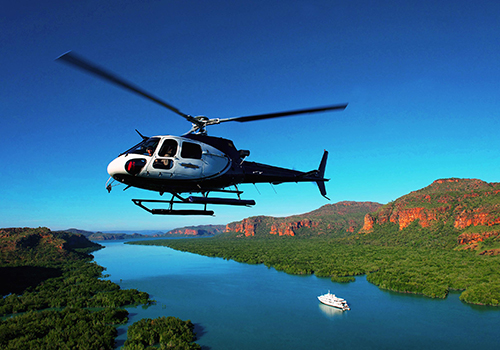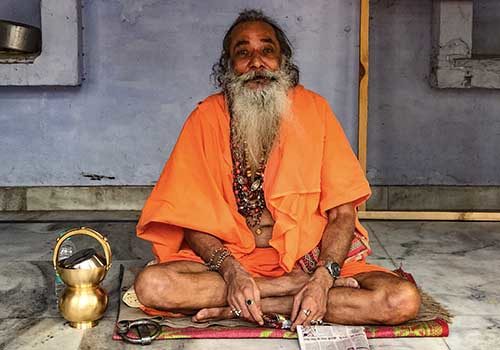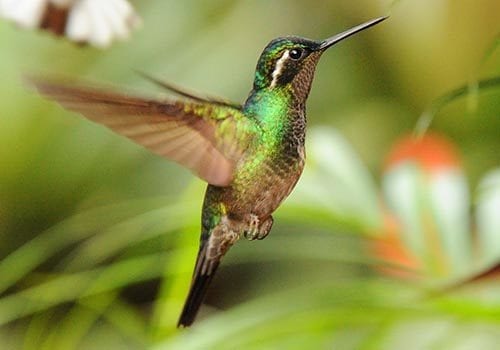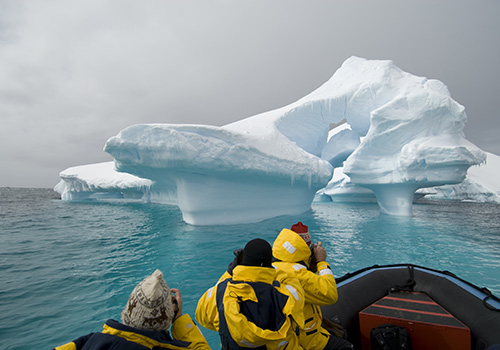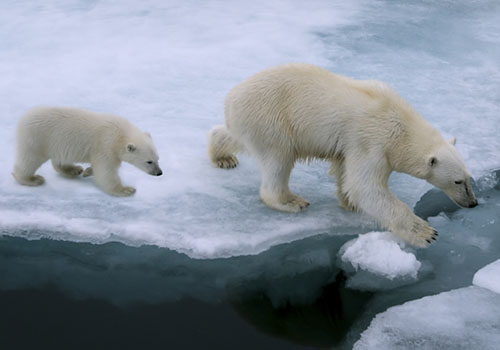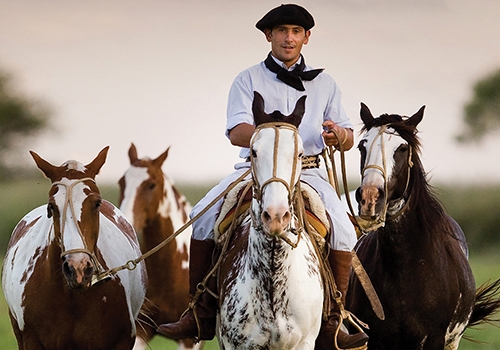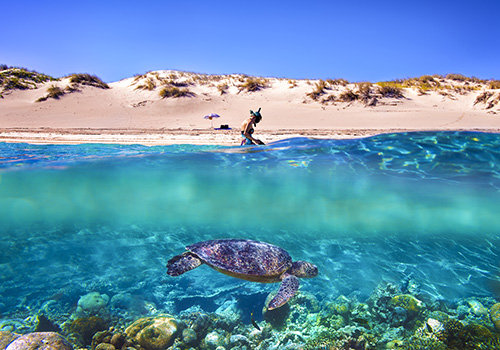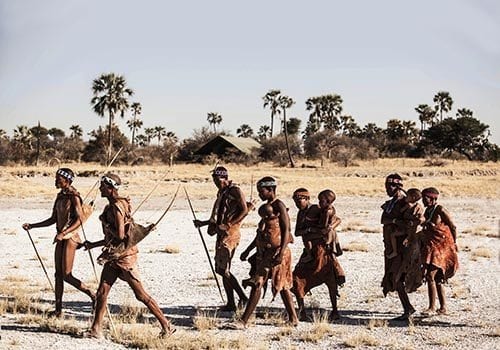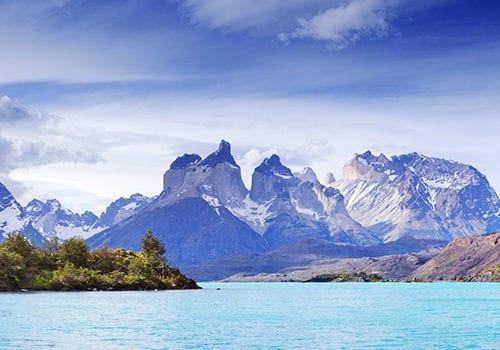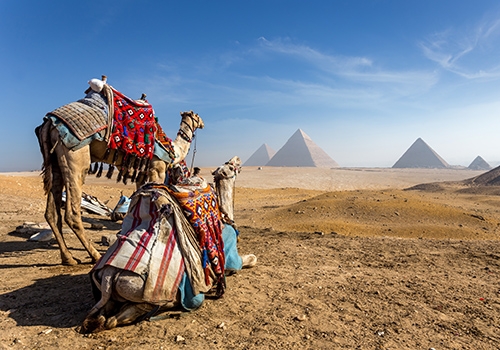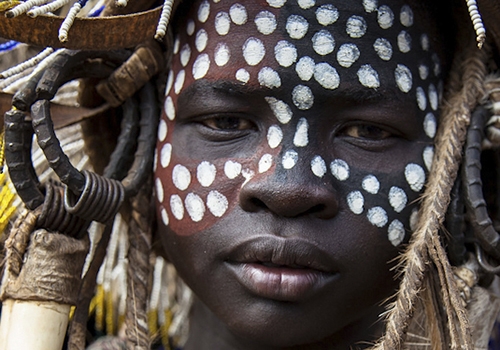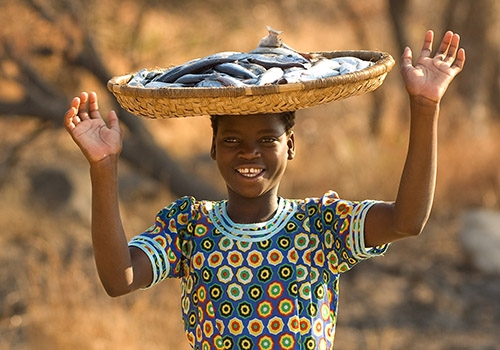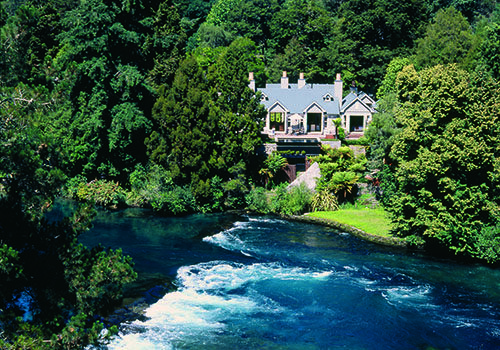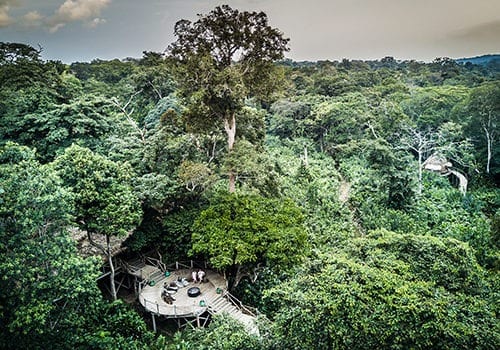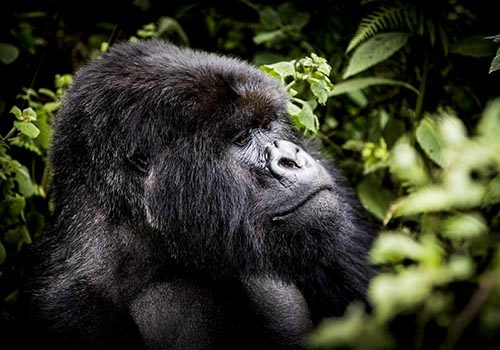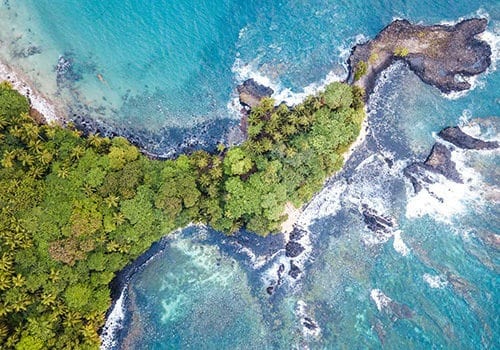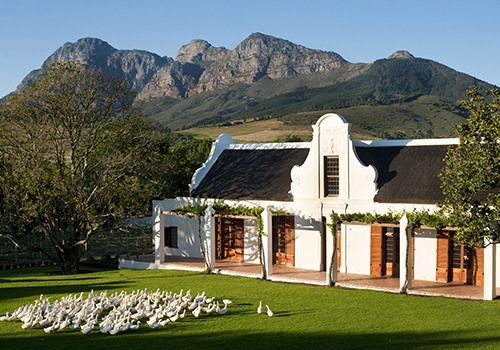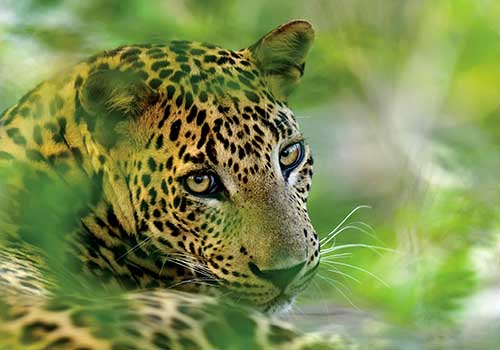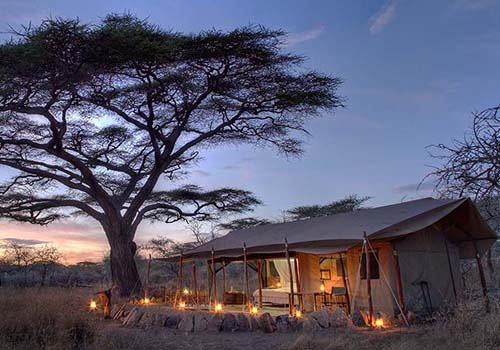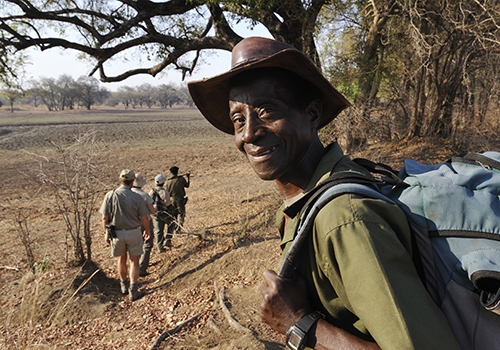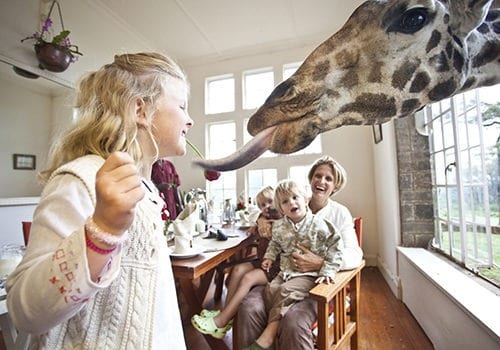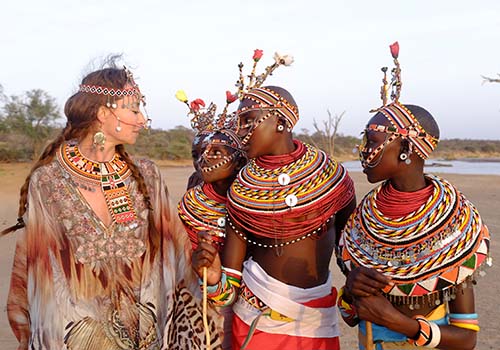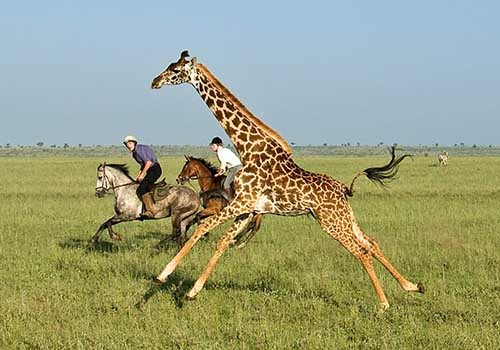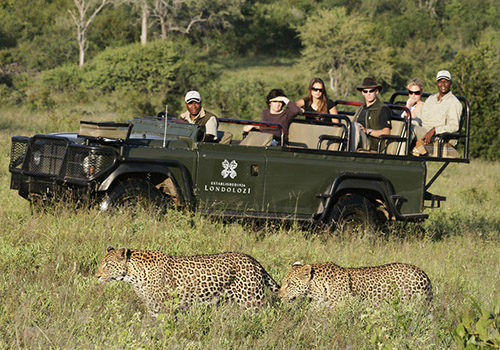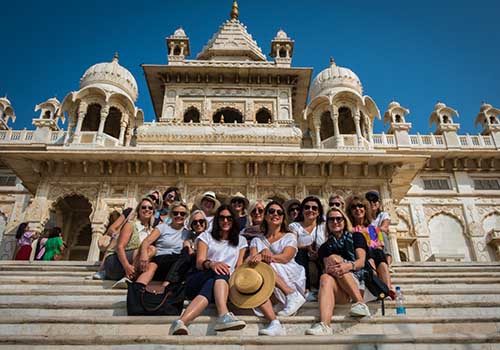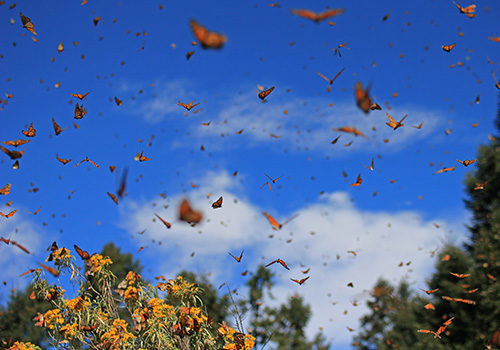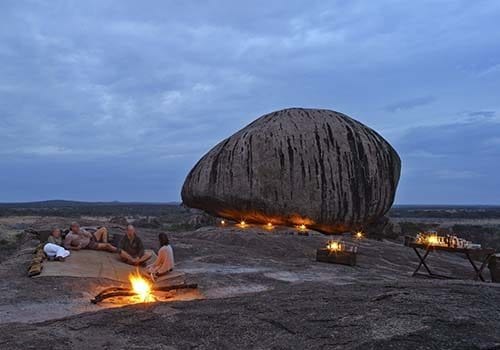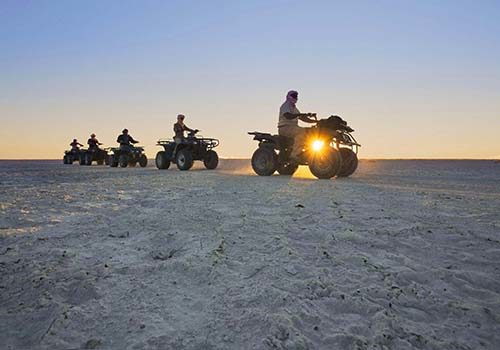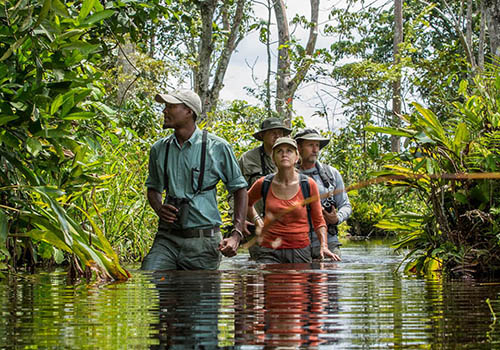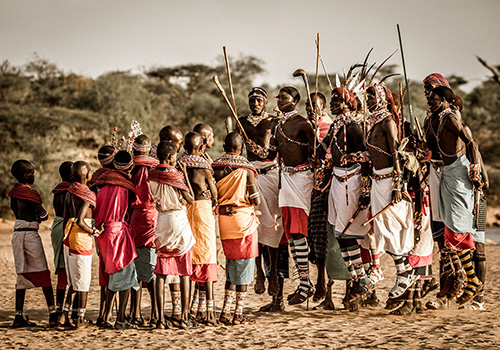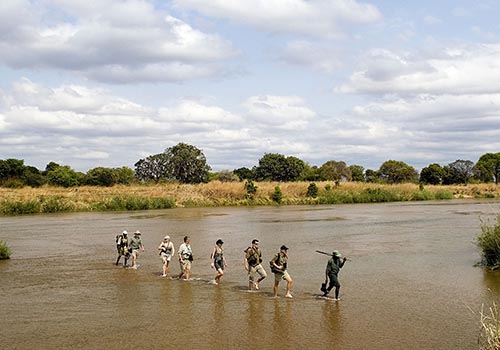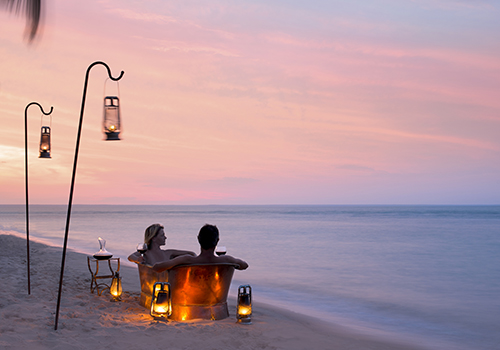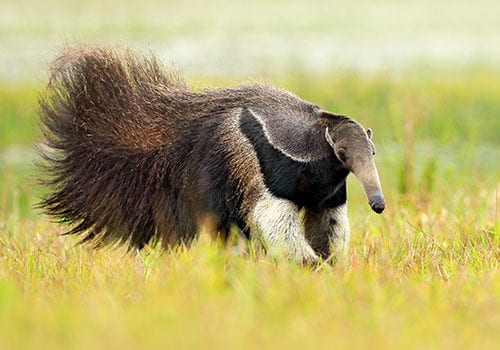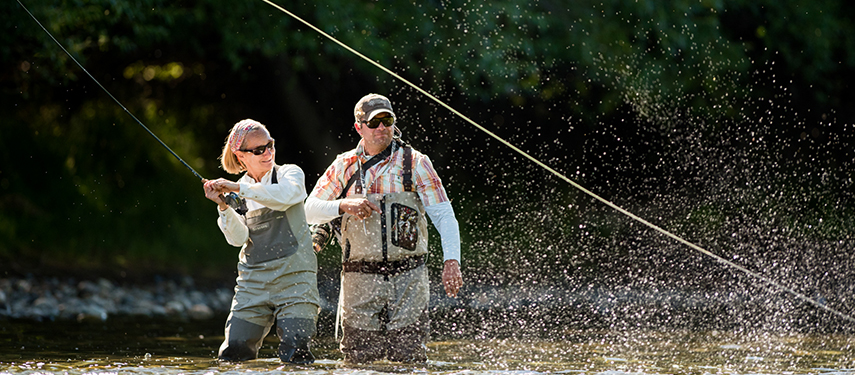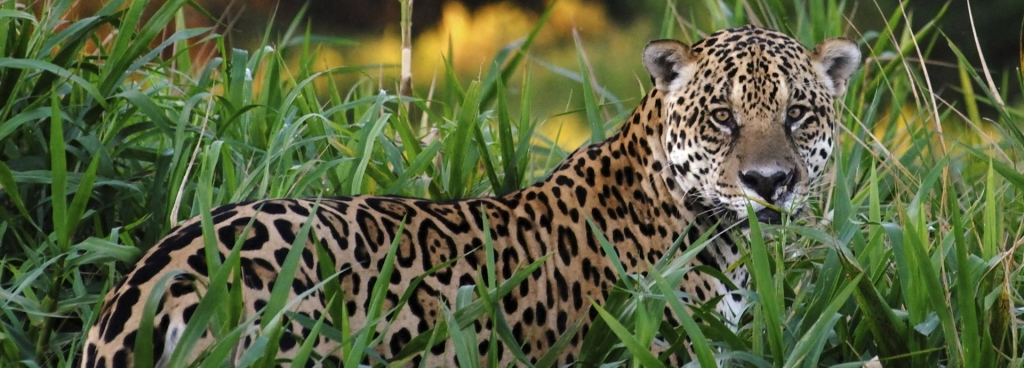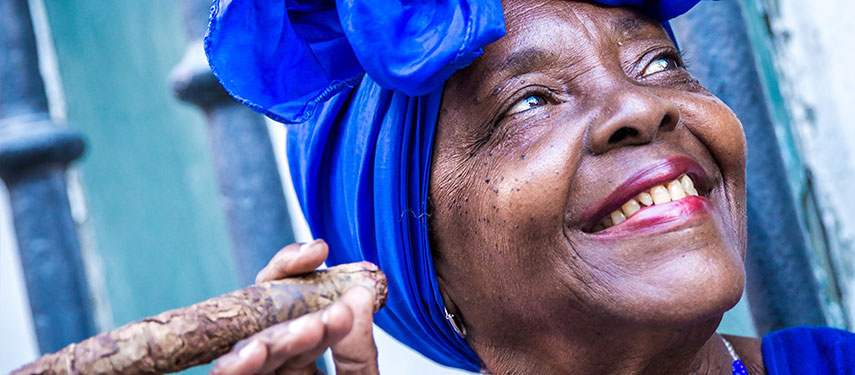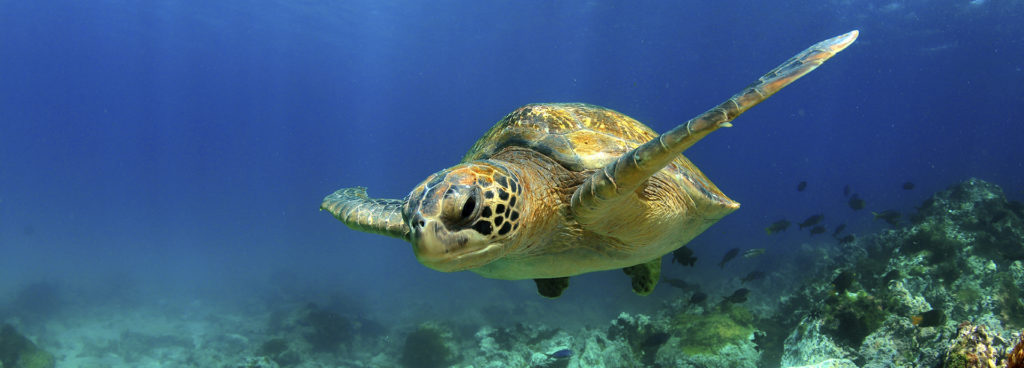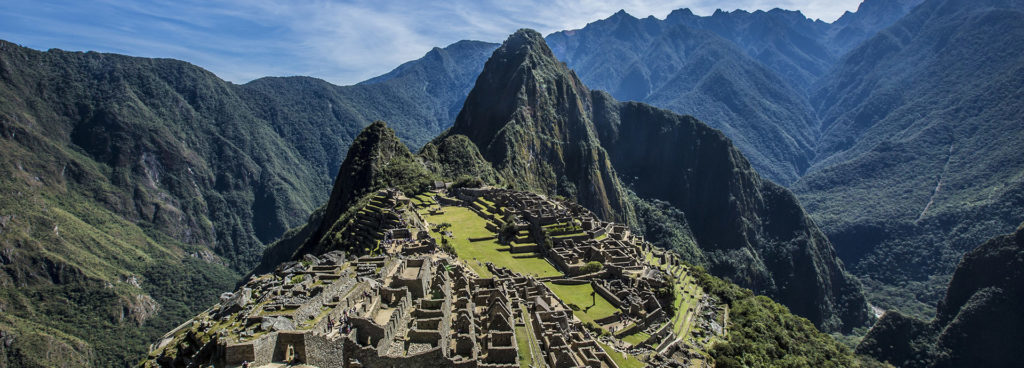
KEY INFORMATION TO PREPARE FOR YOUR JOURNEY
Thank you for choosing The Classic Safari Company for your Latin American adventure.
Stretching over a huge latitudinal range, its little wonder that Latin America displays such geographical diversity and contrast. Here, you’ll discover Patagonia’s icefields, the sky-piercing mountains of the high Andes and the endless grass plains of the pampas contrasting with the colossal floodplains of Brazil’s Pantanal and the world’s largest rainforest and greatest river in the Amazon. Chile’s Atacama is the highest and driest desert while the Galapagos Islands, Iguazu Falls and the stunning coral reefs and palm fringed beaches of the Caribbean coastline offer astonishing watery wonders.
The magnificent range of landscapes are full of unique cultural surprises too including the ancient civilisations and ruins of the Incas and Mayans, the mysterious history of Easter Island, a thriving gaucho heritage, the colonial colour of Cartagena and the avant-garde restaurants of Lima. Whether you’re in to malbec or mountaineering, South America will astonish and delight!
Before you embark on this extraordinary journey, familiarise yourself with the diverse cultures and customs, ensuring that you approach each destination with respect and understanding. Pack your spirit of adventure, a camera to capture the breathtaking scenery, and an open heart to connect with the people you’ll meet along the way.
The following information will assist in preparing for your departure and includes helpful travel hints for when you are there.
PLEASE NOTE: All pre-departure information was correct at the time of writing, but should be used as a guide only since requirements can change at short notice and without warning. Consult Smart Traveller or contact the appropriate foreign embassy and consulate prior to departure to confirm all details.
PASSPORT & VISA REQUIREMENTS
PASSPORTS
For information relating to the specific countries you are visiting please refer to the country specific information pages which are found at the end of this booklet. This page contains important information that applies generally to all countries in Latin America.
Your passport must be valid for at least six months after your return to Australia and have at least two blank pages for every entry and country you intend to visit on your journey. If your passport does not meet these requirements you must obtain a new one. The Australian Passport Office website is www.passports.gov.au.
It is a wise precaution to carry a photocopy of your passport separately and leave a copy at home. This will aid authorities in processing a new passport should yours get stolen or lost.
If you have dual citizenship and more than one passport, we strongly recommend that you use only one of these during your travels, as in some countries it is considered illegal to have two or more passports. Be sure to use the same passport on entry and exit from a country, and never surrender your passport.
If your passport name is different to your commonly used name, advise us of this and ensure your airline reservations match those of your passport name.
VISAS
Requirements for Australian and New Zealand passport holders change constantly so double check with your travel consultant regarding the visas you will need for your trip. Many visas can now be obtained in advance and if this option is available we strongly recommend that you do this to avoid lengthier queues and longer wait times at the airport on arrival.
Generally Australian and New Zealand passport holders travelling as tourists require visas to visit the following destinations:
NO VISA REQUIRED
- Argentina
- Colombia
- Ecuador (and the Galapagos)
- Peru
VISA REQUIRED
- Brazil (from April 2025)
- Chile
- Cuba (tourist card)
All visa applications must be made on each country’s official e-visa website. Please refer to the country specific information pages which are found at the end of this booklet. Please refer to the country specific information pages which are found at the end of this booklet. We can provide detailed instructions for the visa application process if required – just ask. We are also happy to assist you with the online process, however a AU$150, per passport, per visa application, administration fee will apply.
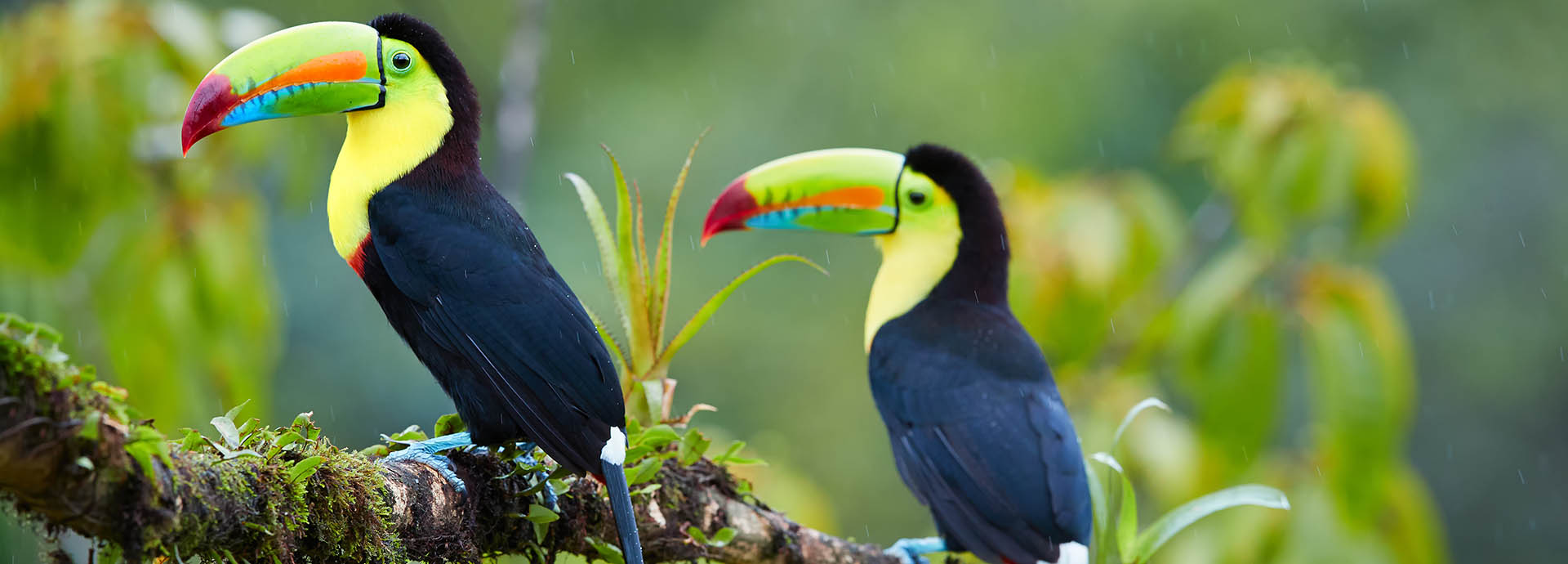
AIR ARRANGEMENTS
PASSPORT NAME
Your airline reservation must be made in your legal name as it appears on your passport (i.e. names on tickets and passports must match). If your passport name is different to your commonly used name, advise us of this and ensure your airline reservation name matches those on your passport.
SPECIAL REQUESTS
Do let us know your seat preferences and any special requests so we can advise the airlines accordingly, however airlines do not guarantee seat preferences and some airlines now charge extra for this service.
Be sure to mention any other special requests you may have such as dietary requirements, kids meals and wheelchair assistance.
FREQUENT FLYERS
Prior to your departure ensure you have provided your consultant with your frequent flyer details so they can be added to your flight booking.
If you intend to use frequent flyer miles for your air travel you must book your own flights directly with the airline. It is a good idea to hold onto all your boarding passes in the event you have a query regarding points on your return.
DIY FLIGHT ARRANGEMENTS
If your flights are not booked by us ensure you provide your consultant with a copy of your flight itinerary so that we can share this with our ground operators who are responsible for booking corresponding ground transfers.

CLIMATE, WEATHER & SEASONS
ARGENTINA
Buenos Aires enjoys a warm and benign climate during the whole year. Average annual temperatures do not show many extremely hot or cold days, which permits visitors to walk around the city during all seasons of the year.
The best time to visit the Iguazu Falls is August to October, when temperatures are lower and the spring colouring is at its brightest. There is no definite dry season in this area, so winters are never harsh, and frosts are few and far between.
Patagonia has a continental cold weather zone with a dry season. Summers are dry and temperatures can reach about 25°c, but most of the year, the range is from 0°c to 20°c; winters are humid and it snows often. Temperatures tend to be quite variable, independent of the season of the year. The difference between max and min temperatures tends to be quite wide.
CHILE
Chile is a remarkably shaped country, extending 6000 kilometres between 22 and 55 degrees south, but having an average breadth of between 150 and 300 km. The east of the country is very mountainous, with peaks up to 5000 mts.
Northern Chile is one of the world’s driest regions. Here, despite being almost rainless, the weather is often cloudy and cool. Annual average rainfall totals can be as low as 14 mm.
Southern Chile tends to be wet all year round, featuring frequent disturbed, changeable weather. Annual precipitation can be as high as 5000 mm much of which falls as snow farther south and on the higher mountains. On the coast, winters are rarely very cold, but summers are cool and cloudy.
BRAZIL
Climate is predominantly tropical, with few equatorial and subtropical (temperate) zones. The predominance of lower altitudes throughout the country provides more elevated temperatures, with averages exceeding 20°c. Extreme temperatures are rare, but they may occur: in the winter, some cities in the south of the country experience negative temperatures, with frost and snow. And in Rio de Janeiro, in the peak of summer, the temperature may hit 40ºc.
AMAZON
It can rain all year round and there may be high temperatures. From November to May rain is heavier, rivers rise, but from May to September temperatures are generally milder but never cold being the best time to visit the Amazon.
PERU, ECUADOR & THE GALAPAGOS
In the highlands, the Andes have usually a rainless winter that runs from April to October, where temperatures during the day are very warm, and a rainy season that lasts from November to March, being heaviest in January – February. The temperatures have accentuated variations between day and night, with sudden temperature falls after sunset.
The Galapagos Islands have a dry subtropical climate. Between January and May it is considered the “warm season” with more tropical climate with daily rain and cloudier skies. And June to December, considered the “dry season”, is cooler with blue skies and mid-day showers.

LUGGAGE & PACKING
LUGGAGE
On most international flights to South America checked baggage is generally limited to 2 pieces of 20kg in economy and 2 pieces of 30kg in business class, plus hand baggage. It is advisable to check the latest rules on hand baggage restrictions before departure. Also you should consider that most of the internal flights allow a maximum of 20kg in economy and 30kg in business.
NO PLASTIC BAGS
To protect the environment, wildlife, and human health over 80 countries now have a full or partial ban on single-use plastic bags. The Classic Safari Company also adopts this policy, and we encourage you to travel with a conscience and travel with no single use plastics. Please click this link for a full list of countries phasing out lightweight plastic bags.
WHAT TO PACK (NOT TOO MUCH!)
Most lodges will provide a same day laundry service (at extra cost) and provide complimentary shampoo and conditioner, so there is no need for lots of clothes and toiletries. Prioritize comfort and versatility, as well as practicality. It’s best to leave your most delicate fabrics at home, especially if you will be making use of laundry services!
When in the cities and some larger lodges, you will probably want some ‘smart casual’ clothes for the evenings. Coat and tie are required in some very smart restaurants and clubs. Many hotels and restaurants in urban areas do not allow denim jeans in the evenings.
RUGGED LUXURY LUGGAGE
The Classic Safari Company has a range of soft handmade leather and canvas travelling bags that are both hardy and stylish.
Small Canvas Gear Bag ‐ $350
Dimensions: Length 60 cm, Width 31 cm (46L)
Approximate weight full with clothing: 12‐15 kgs
Large Canvas Gear Bag ‐ $370
Dimensions: Length 71 cm, Width 34 cm (60L)
Approximate weight full with clothing: 15‐20 kgs
Both items come with a leather shoulder strap & luggage tag. Please contact us for further details and to purchase.
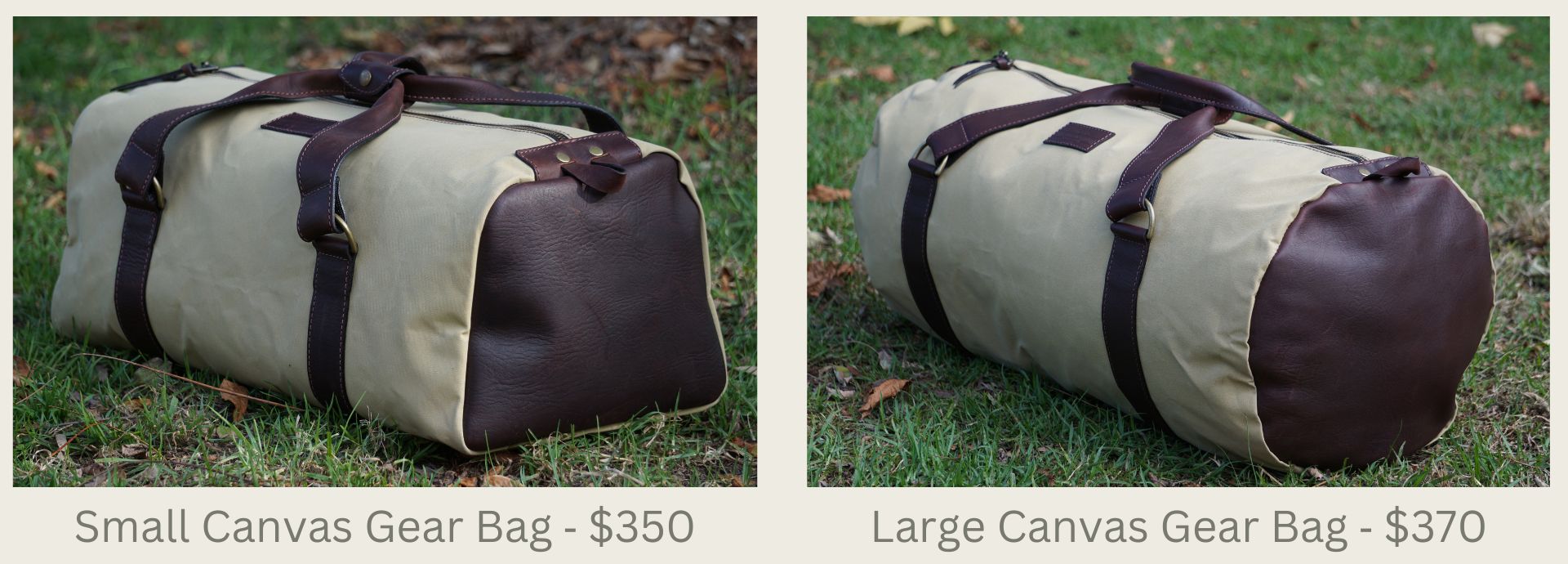
COLOURS
Neutral, earthy colours like khakis, browns, greys and greens are good for walking in wildlife areas but if you are mountaineering then its best to be highly visibly – think bright red, yellow and so on. Dark colours (navy blue and black) attract horse flies and mosquitoes so should be avoided during the day and at night.
LAYERS
If your itinerary takes you from the steamy Amazon to the snowy Andes then you’ll need a range of options. All destinations at altitude and are subject to temperature extremes, particularly in the cooler months (May-August) with warm sunny days and cold crisp nights. Pack with warmth in mind.
COMFORT
Comfort is key wherever your journey takes you. In general natural fibres work best in most climates – linen and cotton are cool when conditions are warm, while merino wool and goose or duck down are lightweight but will keep you cosy when the temperature plummets.
GENERAL PACKING LIST
| TICK | ||
| SHOES | Comfortable shoes (unless you are on a walking or climbing expedition, you do not need heavy boots. A pair of runners or lightweight walking shoes will be sufficient) | |
| Sandals or thongs | ||
| CLOTHES | Warm jacket or windbreaker/light rain jacket | |
| Sweater/fleece | ||
| Gloves, hat & scarf and even thermal underwear (for winter months & early morning outings) | ||
| Long trousers | ||
| Shorts | ||
| Socks & underwear. Sports bras are recommended for expeditions or 4x4 excursions | ||
| Shirts and t-shirts - long & short sleeved | ||
| Smart casual outfit e.g trouser & shirt or a casual dress | ||
| Nightwear / pyjamas | ||
| Swimwear & sarong | ||
| Wide brimmed hat ideally with chin tie for windy conditions | ||
| ACCESSORIES | Toiletries, medicines, basic first aid kit | |
| Sunglasses | ||
| Glasses, contact lenses, solutions etc | ||
| Torch & batteries | ||
| Pen, paper, books / Kindle etc | ||
| Binoculars | ||
| Camera equipment including spare batteries, memory cards, charging cables etc | ||
| Plug adaptor |
HORSE RIDING & HIKING
We provide specialist packing lists for hiking expeditions, horse riding itineraries, and journeys to extreme climates – please see the country specific pages for Chile and Argentina, or contact us for further details.
HORSE RIDING – YOUR WEIGHT
If you are joining a riding set departure, or plan to ride for significant distances during your itinerary, it is imperative that you advise us of your weight at the time of booking (and you inform us if your weight changes significantly prior to your holiday) in order that the riding outfitters can ensure an appropriate horse is available for you. Most riding outfitters have a preferred maximum weight limit of 90kgs. If you are close to or over this weight limit, please contact us. Depending on the riding outfitter you may be accepted as a rider based on your riding ability and experience, or an additional horse may be provided. Failure to share this information may negatively impact your experience.
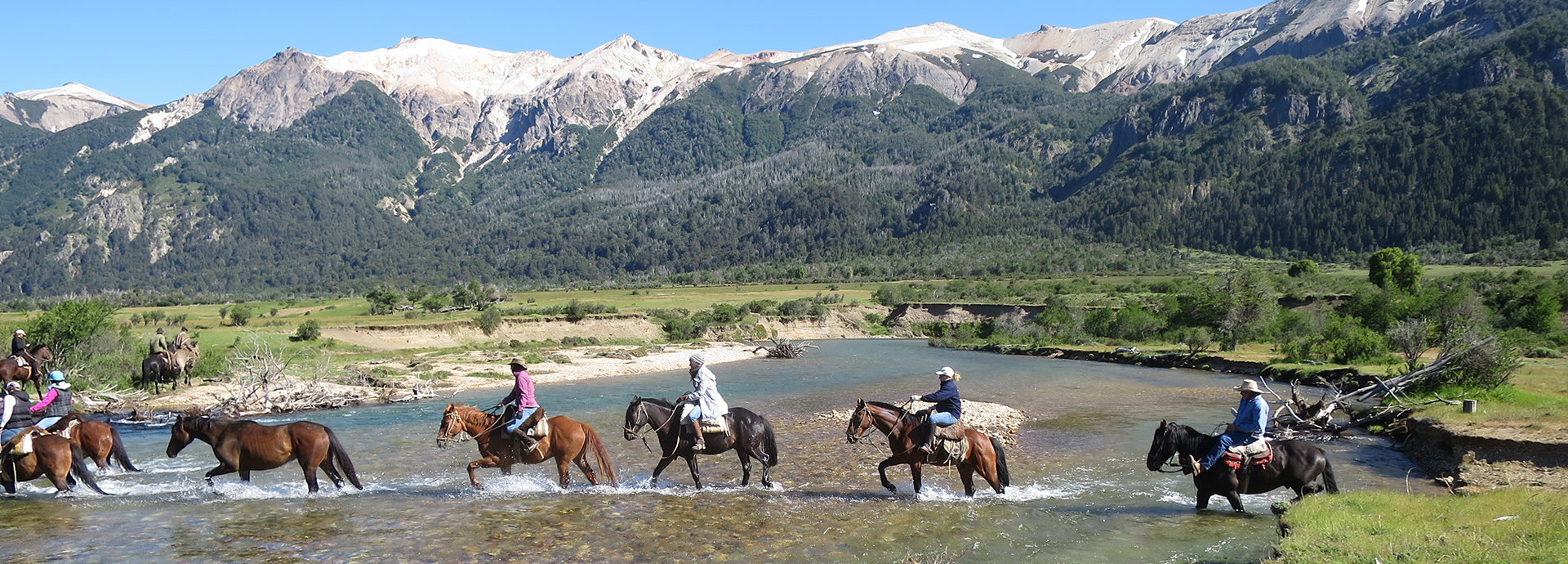
INSURANCE
ENSURE YOU’RE INSURED
Although we hope you’ll never need it, having a comprehensive travel insurance policy is always highly recommended. No international travel is ever entirely without risk, and even the best laid plans can go awry.
Whilst we cannot recommend the right policy for you (as only you know you and what you need), below we have provided links to sites and articles that may help you navigate your way through the choices available.
PLEASE NOTE: The information provided here is subject to change at any time. Please always read the travel insurers’ relevant Product Disclosure Statements and refer to the Australian Government’s Department of Foreign Affairs & Trade’s (DFAT) Smartraveller website for up to date travel advice and their advice on Travel Insurance.
Whichever insurer you choose please provide us with a copy of your chosen policy, insurance certificate and all emergency contact details for our records.
WHAT WE OFFER
The Classic Safari Company is currently associated with the following travel insurance providers :
Each of the above insurers has varying strengths depending on the activities included in the trip you are undertaking. Their websites are easy to navigate and once you have entered your personal details and selected your preferences – be that to reduce your excess, include cover for cruising, increase your cover for cancellation or obtain cover for a pre-existing medical condition – the website will generate a quote. If you are satisfied with what is presented, you simply need to follow the steps to purchase your insurance policy online.
At what point in the booking process should I purchase travel insurance?
It is advisable to obtain comprehensive travel insurance at the time of confirmation/paying a deposit to ensure you are covered from the moment you book.
What should I look for when selecting coverage?
Most insurance companies will cover the basics such lost luggage or flight cancellations, but levels of medical cover vary from policy to policy, and the cover for global issues, such as pandemics, has changed significantly over the past few years. This excellent article, Travel Insurance Simplified, published on 07 April 2022, details what you need to look for when selecting coverage for your next trip. Smartraveller also publishes helpful advice on Travel Insurance.
What is the impact of DFAT travel advice?
Some insurance will not cover travel to countries where the Australian Department of Foreign Affairs & Trade (DFAT) is warning Australians to “Reconsider your need to travel” (Level 3) and most don’t cover travel to places with a “Do not travel” warning (Level 4). Most international travel insurance covers visits to Level 2 countries. DFAT travel advisories can change over time and this may affect your travel insurance coverage. You should always check the advice levels on the Smartraveller website.
How much does travel insurance cost?
Costs will vary depending on your age, destination, duration of your journey, preferred excess, cancellation cover, and if you have any pre-existing medical conditions. It is important to note that the inclusions with each policy are different so price is not the only factor you should consider when choosing travel insurance – cheaper policies often don’t provide the cover you might expect. You should read the small print carefully before purchasing any travel insurance policy to ensure it is suitable for your needs.
Can I use my credit card travel insurance?
Many premium credit cards come with complimentary travel insurance. If you elect to only be covered by your credit card travel insurance it is paramount that you understand the terms and conditions, policy availability subject to your age, trip duration and destination, item limits, sub-limits and exclusions that may apply. It is also worth noting that many credit card travel insurance policies automatically exclude cover for epidemics and pandemics and may not cover charter flights.
What about reciprocal health care agreements?
If you’re travelling to one of the 11 countries for which Australia has reciprocal health care agreements, you may also be able to access free health care at your destination under these arrangements. The exact benefits available to Australians in each partner country vary. At a minimum, you can generally access emergency medical and hospital care in any of these 11 countries by simply showing your valid Australian Medicare card.
Even if you’re travelling to a country that has a reciprocal health care agreement with Australia, it’s still a very good idea to get travel insurance as these care agreements can be quite limited. Travel insurance will also cover you for everything else besides your health, such as delays or cancellations.
HEALTH & VACCINATIONS
VACCINATIONS
It may be necessary to take medical precaution prior to, and whilst travelling. As we are not qualified to offer advice, we recommend you contact your GP or the Travel Doctor-TMVC who have the most up‐to-date information available. Requirements are highly personal depending on your health profile and the activities in your itinerary. Some vaccinations must be given well in advance of travel, so we suggest seeking medical advice as soon as you start to plan your trip. Be sure to ask what vaccinations or medications may be required to enter the specific countries you are travelling to, and to re-enter Australia.
You can also refer to SmartTraveller for a guide as to what may be required, however you should always seek professional medical advice before travelling.
PRESCRIBED MEDICATION & *PERSONAL MEDICATIONS
A doctor’s certificate is required as proof of the need to carry personal prescription medication (drugs). The Classic Safari Company does not accept responsibility for any person found in possession of illegal drugs or substances.
GENERAL ADVICE & STAYING HEALTHY
In most major cities there are fully equipped hospitals with well provisioned dispensaries, often with the services of highly qualified and often overseas‐trained doctors/specialists available. Most first-class hotels also have doctors on call.
If your itinerary includes travel to high altitudes be sure you are aware of the symptoms of altitude sickness and you carry the recommended medication.
Modern dentistry is largely unknown in some parts of South America so have a check-up before leaving Australia. Tooth fillings sometimes loosen in cold temperatures and at high altitudes, so have these checked.
MEDICAL INFORMATION
MALARIA : Malaria is endemic to many areas of South America and anti-malaria medication may need to be taken prior to your departure, during your travels and for a period after your return. Consult the doctor at the medical centre for the latest information pertaining to the countries you will be visiting. Malaria is caught if bitten by a mosquito carrying the parasite. The best precaution is to cover up at dusk and dawn, with long sleeved shirts, trousers and socks. Apply mosquito repellent, such as RID, to exposed skin and sleep in a mosquito free room or tent. Nearly all accommodation has mosquito netting.
YELLOW FEVER : Yellow Fever vaccination is recommended for all countries in South America except for Chile. It is now compulsory for entry into Brazil if visited in the previous 3 months any Yellow Fever region in Africa or South America (Peru, Ecuador, Bolivia, Colombia, Venezuela and Iguazu Falls area in Argentina), and re-entry into Australia if you have been to a Yellow Fever region (including Brazil) within the six days prior to your arrival. You must be in possession of your Vaccination Booklet to show that you have been inoculated.
OTHER VACCINATIONS : It is your responsibility to ensure that you are up-to-date with all of your vaccinations. You may require a booster jab for proper inoculation against diseases such as: Typhoid and Hepatitis A & B.
BILHARZIA: Bilharzia is a disease contacted by swimming or bathing in still, stagnant water, which is contaminated by the larvae of a parasitic worm. If you wish to swim, please ask your host or guide for advice. Countries with risk to get this disease are Brazil and Venezuela.
ALTITUDE SICKNESS: Altitude sickness is caused by reduction of the available oxygen in the air, which increases your breathing and pulse rate and may include symptoms such as headache, dizziness and nausea. If these symptoms persist, return to a lower altitude as quickly as possible. Severe cases of altitude sickness may lead to pulmonary or cerebral oedema which can be fatal. Ascend slowly, rest frequently, drink plenty of water, avoid alcohol and eat light meals high in carbohydrates.
NOTE: If you have the appropriate level of cover you may be able to claim a rebate through your private health insurance under your extras cover for part of the cost of your vaccines and anti-malarial medications. We recommend you check with your private health insurance company.
FIRST AID KIT
Travelling with a compact First Aid Kit is highly recommended and having the ability to cure common complaints quickly and without stress can really enhance your travelling experience. The Travel Doctor-TMVC have kits for sale that include basic items to which you can add depending on your personal requirements.
The items listed here provide a checklist for mild ailments and common circumstances.
- Personal medications*
- Antiseptic cream
- Anti- malarial tablets
- Aspirin/Panadol
- Sun block
- Throat lozenges
- Insect Repellent
- Indigestion tablets
- Diarrhoea tablets (Imodium)
- Lip salve
- Antibiotics
- Laxatives
- Plasters/band aids
- Anti-histamine
- Skin moisturiser
- Eye/Ear drops
- Nausea tablets
- Cold/flu tablets
FOOD & DRINK
FOOD & DRINK
Drinking water from the tap is usually safe to drink in the major cities, particularly in Argentina and Chile. In smaller centres it is best to stick to bottled water (readily available in most places) or to drink water that has been boiled.
Food is generally excellent in South America (it is home to some of the most highly acclaimed restaurants in the world!) and you shouldn’t have too many concerns about it. In the main tourist areas and lodges, standard of food preparation is usually very high. It is wise, however, to make sure that raw vegetables and fruit have been washed and that meat is properly cooked through.
Street food can be delicious, but make sure to choose vendors with good hygiene practices. Look for places where locals are also eating, as it’s a sign of freshness and safety.
When in doubt, tap into local knowledge about what to eat or where to go and ask locals for recommendations. They can provide valuable insights into the best food and drink options.
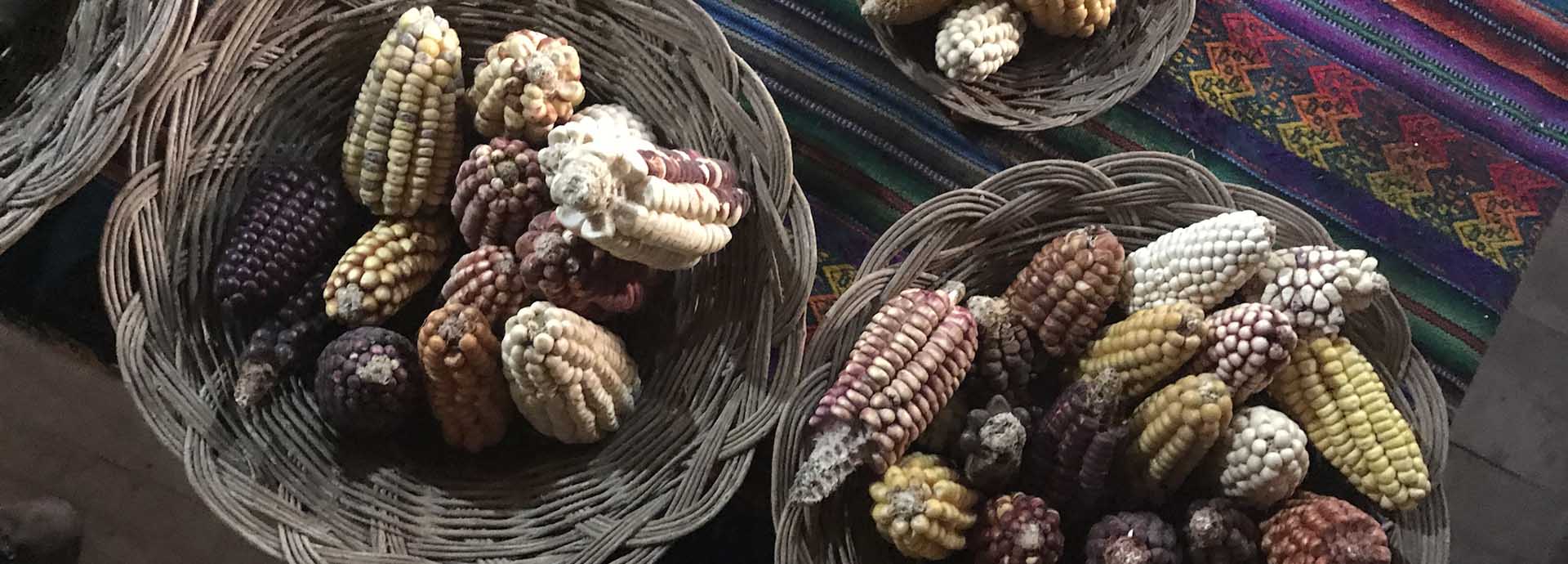
CULTURE & WILDLIFE
WILDLIFE & YOUR SAFETY
To view the fantastic wildlife is one important reason people go to South America.
Attacks by animals are rare but no tour operator can guarantee that such incidents will not occur and cannot be held responsible for any accident or injury which might happen as a result. Your guides are there to find the animals, to educate you about the animals and to protect you from them.
Wild animals can be dangerous and you must always follow the instructions of your guide.
When in lodges you must also follow some common-sense rules. Do not wander around at night; do not sleep with your door open and do not leave food around on the verandah.
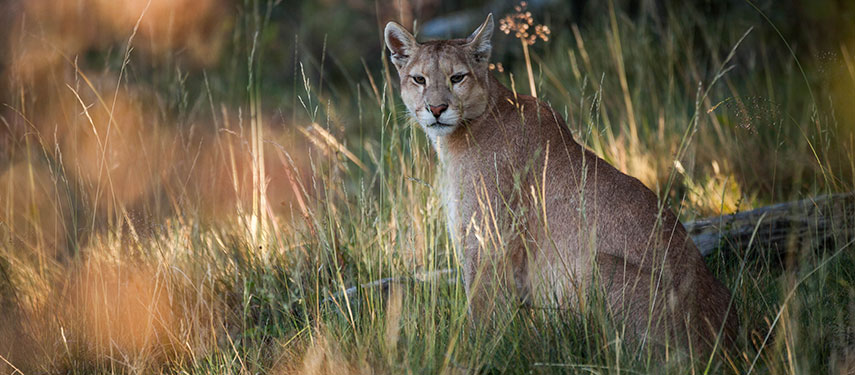
BASIC RULES WHEN UP CLOSE AND PERSONAL WITH WILD ANIMALS:
- Never wander away from the lodge on your own or go walking without a qualified guide
- Never feed the animals and do not litter
- Never get out of your vehicle or lean out of the windows unless your guide says it’s OK
- Do not encourage your guide to ‘get closer’, honk the horn, drive off the road or cause the animals any distress
- Do not remove anything from a park such as feathers, plants or bones
CULTURE & CUSTOMS
You will be travelling to an exotic and often undeveloped part of the world, where many of the local people have a different outlook on life with a variety of religious and cultural beliefs. This is one of the reasons for travelling – to see and experience something other than your day-to-day life. The people of South America are warm, helpful and eager to meet foreign tourists.
Do not expect things to happen as quickly as you might like. Relax, take things in your stride and keep an open mind. Remember – you are a guest in their country and a smile goes a long way. Learn as much as you can about the countries you’ll be visiting before departure – and don’t forget to pack a sense of humour!
PHOTOGRAPHY
Please respect local feelings and customs when taking photos. At times you may need to tip locals in order to take photos and your guide will advise you. It is forbidden to photograph certain places such as airports, dams, bridges, government buildings and military installations. If in doubt, ask.
SHOPPING & BARGAINING
Everyone enjoys coming home with souvenirs – whether it’s a fine piece of sculpture or a hand-carved wooden animal. Bargaining is the rule in most areas although in shops and stores, the prices are usually fixed. Bargaining is an art form and can be half the fun of coming home with ‘a treasure’. You can quickly learn the skills and will be pleased at getting your purchases at much less than the first price offered.
Among the local items to be found in every market, roadside stand and tourist shop are hand-woven baskets, colourful textiles, jewellery and wooden carvings. Quality varies greatly – have a good look at what you’re buying and make sure there are no signs of borers, particularly on the underneath of wooden artefacts.
When returning to Australia, you need to declare all the goods that you have bought in South America – particularly basket-ware and wooden products (we suggest you pack them separately or on the top of your suitcase so they are easy to get at for Customs). Generally all these items are allowed, but must be inspected. Some animal skins may be imported but you should check with Customs prior to going to South America for the necessary requirements.
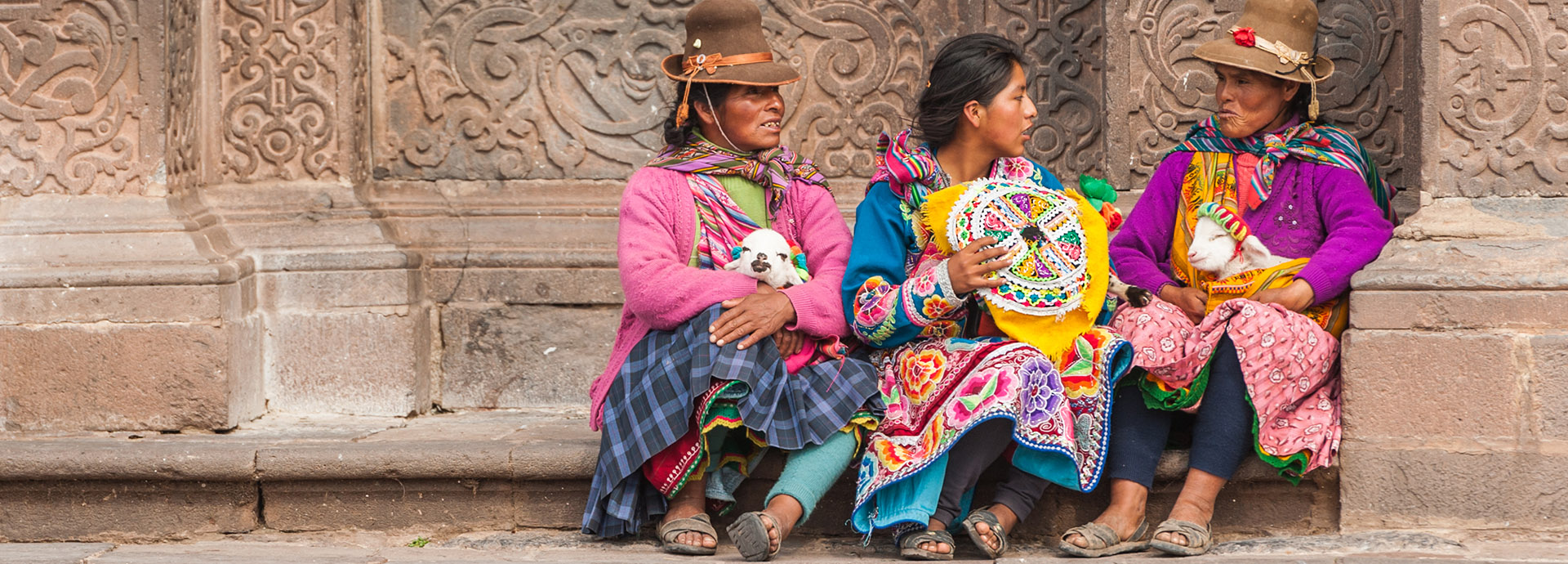
MONEY MATTERS
CURRENCY AND EXCHANGE
Your itinerary and invoice will indicate inclusions and exclusions. As a rule, most lodges are offered on a ‘fully inclusive’ basis with extras being drinks, tipping and laundry. Most luxury lodges now include local alcoholic beverages in their rates with extra charges only for imported alcohol. Hotels in cities and towns are generally booked on a ‘bed and breakfast’ basis.
TRAVELLERS CHEQUES: The safest way to carry money is in Travellers Cheques however it is becoming more difficult to exchange these in many countries, particularly outside lodges, major towns and cities. If you prefer this method of carrying money we suggest you take some in both large and small denominations, i.e. USD 50 or under. Use well-known Travellers Cheques such as Thomas Cook or American Express. Australian Dollars can be exchanged readily in major cities but we would still recommend US Dollars as a preferred currency. It is a good idea to keep a record of your Travellers Cheque numbers, and where/when you spent them, separate from your actual cheques.
CASH: With cash we recommend you take small denominations (ones, fives and tens) and that they are the new US notes (printed post 2000, or post 2004 is even better) and that you only take as much cash as you feel confident carrying. Never wear a visible money belt, and take care of your possessions at all times.
CREDIT CARDS: Major international credit cards such as Visa and Mastercard are widely accepted. AMEX is not so popular and in some instances is not accepted at all. Please note that you need to take your physical credit card, and you need to know your PIN number, as not all places will allow you to ‘tap’. In some cases you may also be asked to sign.
ATM MACHINES: ATM machines are available in most cities & towns, are NOT widely available beyond that so do rely on these as your sole source of funds. Please use caution when withdrawing cash, as you would at home.
If you would like to find out where you can use your VISA card in an ATM anywhere in the world you can visit the VISA website at www.visa.com. When you get to the Home Page, choose the country you are interested in, then click on ATM LOCATOR and follow the prompts.
It is always best to take a mixture of money – credit card, debit card or travel cash card, plus cash just in case. Small denominations are advisable, especially for tipping. If all else fails, have someone you can depend on who will make an emergency transfer of funds.
It is recommended that you DO NOT change money on the black market as you are more likely to receive a lower rate of exchange or fake notes.
TELL YOUR BANK
We highly recommend you advise your bank of your destinations and travel dates. This should prevent any of your transactions being deemed as ‘out of the ordinary’ (and possibly stopped) due to their unexpected location.
SECURITY
It is advisable to carry money, Travellers Cheques, passport, ticket, and vouchers in a hidden money belt. Do not wear valuables such as jewellery and expensive watches and if available, leave documents etc. in a safe. Photocopy your passport, visas, travel insurance and air tickets. Carry this information separately to your original documents.
SPENDING MONEY
It is extremely difficult to calculate exactly how much each person will spend however we suggest you budget around A$40 per person per day for extras such as tips, visas, drinks (if not included) and personal purchases. We generally recommend a combination of cash and a credit card.
Of course, if you plan to shop ’til you drop’ (and there is a lot of great shopping in many of the Latin American cities!) then budget accordingly.

TIPPING
Tipping is a difficult topic and we offer our advice as guidance only. Tipping in all cases is at your discretion and should be based on the level of service that you have received. You will find that in most South American countries staff will not ‘hover expectantly’ but will be appreciative of any gratuity received. In very general terms, it is customary in cities to tip 10% for restaurants, cafes etc. and USD 2 are sufficient for a porter carrying your bags.
Guides are highly trained professionals and will be primarily responsible to ensure that your trip is a safe and enjoyable experience therefore guides tips should be proportionately higher. In lodges and camps there are two ways to leave a gratuity. If you have enjoyed the level of service and expertise of your guide, the usual tip is USD 20 per traveller per day depending on where you are staying and the calibre of your guide.
Likewise, if you feel the overall service in a lodge has been good and you’ve been well looked after you might wish to leave a tip for the general staff. There will be a lot of staff you never see – the person who cleans the rooms, the mechanic who repairs the vehicles, the cook etc. This tip (USD10 per traveller per day) can be given to the lodge manager or many lodges have a staff gratuity box at the bar or in the lounge. These tips are divided up amongst the staff at the end of the month or season.
And remember tipping is discretionary. If you have received exemplary service show your appreciation with a big tip and if in doubt, err on the side of generosity – it will always be appreciated.

POWER, TECH & PHOTOGRAPHY
POWER
There are basically two main voltage systems used around the world: 110 Volt ‐ USA, Canada, Spain & Japan 220 Volt ‐ the rest of the world. In simple terms, the power supply available at the socket is roughly twice as powerful in 240V countries as in 110V countries.
In Latin America, plugs vary from country to country so ensure that you carry the correct adaptor. Alternatively you may prefer to invest in an International Travel Adaptor (e.g. the 4 x USB power adaptor from Korjo) that provides you with more than one option, especially if you are moving through several different countries on your itinerary.
Please note that facilities for hair dryers and shavers are not readily available in some eco-lodges as they operate on generator power. Battery operated appliances are ideal and most camps and lodges have recharging facilities.
ADAPTORS

For the latest and most up to date information about voltage and adaptors please refer to: www.korjo.com
Type A – Japanese style 2 flat pin plug
Needed for:
- Colombia
- Peru
Type I – 3 flat pins in a triangular pattern
Needed for:
- Argentina
Type B – USA style 1 round & 2 flat pins
Needed for:
- Colombia
- Ecuador
- Peru
Type C – European style 2 round-pin plug
Needed for:
- Argentina
- Brazil
- Chile
- Peru
SMART PHONES & DATA
Smart phones can be wonderful travel companions. Not only will they help you stay in touch with friends and family, they’ll guide you through unfamiliar cities, enlighten you on local attractions, translate foreign languages and produce great photographs.
Left unchecked they can also wreak havoc with your travel budget!
The reason is that some (but not all) of the fun and useful functions smart phones perform require the downloading of data via an internet connection. Unfortunately, if you’re paying for data roaming it can be an expensive exercise and you run the risk of returning home to an expensive shock.
If you want to make the most of your mobile device, while avoiding unexpected and unpleasant charges, keep in mind the following tips:
- Buy an International Roaming Pack ‐ think about buying a pack from your phone network before departure in order to access cheaper rates
- Remove your regular SIM and replace it with a pre‐paid SIM either purchased before departure or upon arrival. Not only will you benefit from better prices for data, voice calls and SMS, but there will be a pre‐set limit on how much you can spend giving you some piece of mind.
- Turn off global roaming ‐ the problem with data roaming is not simply the exorbitant costs travellers are charged for downloading megabytes, it’s the fact that this data is often being sucked down without you even being aware of it.
To be safe, the easiest thing to do is simply disable data roaming.
We do NOT recommend taking advantage of free-wifi in public places such as airports and malls. The connection is often insecure, and you could run the risk of data & information theft. If you do need to go online, whether to check your emails, use a handy app or make an online booking – your best option is to find SECURE free or affordable Wi‐Fi.
PHOTOGRAPHY
Please respect local customs and feelings when taking photos. You may need to tip locals in order to take photos. It is forbidden to photograph certain places such as airports, dams, bridges, government buildings & military installations in many countries. If in doubt, ask!
Photography plays an important role in any holiday and it is suggested that you bring 2 rechargeable batteries and ensure that you have adequate memory space.
Protect equipment from the dust and humidity with plastic bags. If you are in the Amazon you should store desiccants with your equipment. Make sure your cameras and lenses are adequately insured before you leave home and it’s a good idea to carry a receipt to prove ownership.

CLASSIC SAFARI CO TRAVEL APP
Your very own App for travel – let the countdown begin!
The CLASSIC SAFARI CO App is supplied courtesy of The Classic Safari Company. It is a very handy tool with the upside being that you can view all your travel documents on your device at any time, whether connected to the internet or not. It will be where we house all your travel documents. Our App along with emailed digital copies of your travel documents, will be all that you will require once travelling.
Therefore, it is important to take the time to become acquainted with The Classic Safari Co App, and contents, well before you travel.
To start viewing your travel documentation you will need to download, at no cost, The Classic Safari Co App on your Phone, iPad or Tablet by following these steps:
- STEP 1 : Be sure you have internet access
- STEP 2 : Open the App store on your device and search for ‘The Classic Safari Co’ or download on the Apple App Store or Google Play
- STEP 3: Once installed and opened, you’ll be asked for your User ID and your Unique Passcode. Please enter the following:
- USER ID: TCSC
- UNIQUE PASSCODE: NAME+FILENUMBER
Click accept and wait for your travel documents to download before starting your journey on the App.
NOTE: If you prefer to access your trip details and documents on your personal computer, you can do so by visiting https://web.vamoos.com/. Please use the same user ID and unique passcode provided above.
HOW TO DOWNLOAD
Open the App store on your device and search for ‘The Classic Safari Co’. Alternatively, using your device click the icons below to download on the Apple App Store or Google Play
OUR APP LOOKS LIKE THIS:

ON THE APP YOU WILL FIND:
- Your travel documents
- Destination information
- Maps
- Real time weather data
- E-tickets and flight information (if applicable).
ADDITIONAL OPTIONAL DOCUMENTS
We can also upload additional documents such as Tourist Visas, Vaccination Certificates, and your Travel Insurance Certificate if you wish to have them on hand as you travel. If you would like us to add these for you please email any additional documents in PDF format (only) and we will add them to your profile. We do not recommend adding or sharing your passport information online.
UPDATES & CHANGES
We will update all documents if and when changes occur, and prior to your departure we will furnish you with emergency contact information and any relevant travel vouchers.
OFFLINE USE
The greatest benefit of using our App is that once the initial download has occurred you will no longer require internet access to view what has been uploaded for you.
SECURITY
Please note that the software developer of our app (Vamoos) cannot guarantee the safety of personal data against identity theft, particularly if you are using a free wifi service whilst travelling. We do not recommend using free wifi services anywhere in the world.

ALREADY HAVE THE CLASSIC SAFARI COMPANY APP INSTALLED?
If you already have The Classic Safari Co App installed, to load a new trip you simply need to follow these steps:
- STEP 1: Open The Classic Safari Co App on your device and in the top left corner you will see 3 small horizontal lines (the burger menu). Click these and look for the words ‘Load New’… click this and then enter:
- USER ID: TCSC
- UNIQUE PASSCODE: NAME+FILENUMBER
- STEP 2: Wait for your travel documents to download before starting your journey on the App.
Should you have any questions about the App or the information uploaded for you please don’t hesitate to get in touch.
Thanks, have fun and let the countdown to your departure begin!
DEPARTURE CHECKLIST
| TICK | ||
| AIRLINE TICKETS | Do the names printed on your tickets exactly match those written in your passport? | |
| Are your itinerary details exactly as you expect them? | ||
| PASSPORT | Do you have at least one blank page for every country you intend to visit? | |
| Is your passport valid for a minimum of 6 months after your return date? | ||
| VISAS | Do you have the necessary visas? NB: Non-Australian passport holders will require a re-entry visa to return to Australia. | |
| MONEY | Have you told your bank where you are going and how long for? | |
| Will your credit cards be valid for the duration of your trip? | ||
| Do you have enough cash (USD or local currency) and is it in small denominations? | ||
| TRAVEL DOCUMENTS | Have you double checked that all the details on your travel documents are correct? | |
| Do you have all the contact information that you might need? | ||
| Have you filled in your luggage tags with your home address and contact information? | ||
| INSURANCE | Are you fully covered for the duration of your trip and for all of the activities you might be taking part in? | |
| Have you sent the policy number and emergency contact details to TCSC? | ||
| VACCINATIONS | Have you visited a travel doctor to make sure you are up-to-date with your jabs? | |
| Do you have anti-malarial tablets? (please pack some in your hand luggage) | ||
| Do you have your vaccination book with you in case you are asked to present it at customs? | ||
| DUPLICATE COPIES | Have you made copies of your itinerary, tickets, passport and visas? We suggest packing one copy of these and leaving another with family or a friend. | |
| FLIGHT RECONFIRMATION | Reconfirm your flights at least 72 hours prior to travel & double check the flight departure times. These can change without notice. | |
| LUGGAGE | Have you packed everything? (See our packing checklist for more information) |
RECOMMENDED READING LIST
The Motorcycle Diaries – Ernesto “Che” Guevara
In Patagonia – Bruce Chatwin
The Last Cowboys at the End of the World: The Story of the Gauchos of Patagonia – Nick Reding
A Death in Brazil – Peter Robb
How to Be a Carioca – Priscilla Ann Goslin
Brazilian Adventure – Peter Fleming
Exploration of the Valley of the Amazon – William Lewis
Living Poor – Moritz Thomsen
Uttermost Part of the Earth – Lucas Bridges
Trail of Feathers: In Search of the Birdmen of Peru – Tahir Shah
The White Rock: An Exploration of the Inca Heartland – Hugh Thomson
Inca land: Explorations in the Highlands of Peru – Hiram Bingham
At Play in the Fields of the Lord – Peter Matthiessen
Cañar: A Year in the Highlands of Ecuador – Judy Blakenship
Savages – Joe Kane
Galapagos – Kurt Vonnegut
Please also share any of your own recommendations with us. We are always on the look out for new reads.


